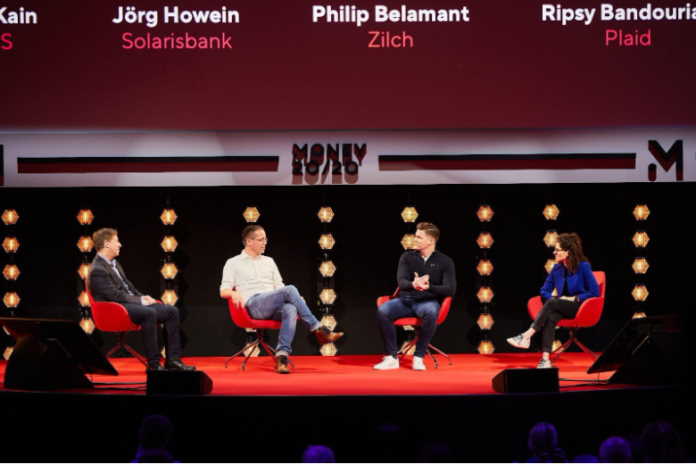Philip Belamant, Zilch CEO and co-founder invests in fintech to enhance consumers’ experiences and surpass evolving customer expectations.
American consumers’ credit card balances continue to cause angst for those in varied income brack2ets. For perspective, the Federal Reserve Bank of New York states that Americans’ aggregate credit card balance stood at $841 billion during 2022 Q1. This figure represents a $15 billion decrease from $856 billion in 2021 Q4. However, higher interest rates and skyrocketing inflation are not likely to result in any relief and market commentators expect consumers to lean on their credit cards far more as the cost of living crisis hits the family budget hard in the second half of 2022.
To complicate the issue, credit card companies hit consumers with late fees and/or higher interest rates after any missed payments. Users with changing credit scores have also been surprised by interest rate increases. Worse yet, cash-strapped consumers often face multiple fees and penalties when they can least afford it.
History of Credit Card Companies’ Questionable Practices
The National Consumer Law Center (or NCLC) says credit card companies’ questionable practices went unchecked for many years. Federal bank preemptions meant few regulations were in place.
To further compound the problem, most credit card lenders are top-tier banks. These well-capitalized entities can legally skirt state limitations regarding interest rates, penalties and fees, and other card-related practices.
In 2009, the Credit Card Accountability, Responsibility, and Disclosures (or CARD) Act officially put an end to credit card deregulation. The NCLC helped to enact that legislation and continues to advocate for new credit card reforms.
BNPL Credit Card Alternatives Offer Viable Solutions
Consumers’ widespread dissatisfaction with credit card companies led to the formation of an innovative alternative payment method. During the early 2010s, Buy Now, Pay Later (or BNPL) solutions were introduced as a point-of-sale financing option.
An outgrowth of traditional installment plans, a BNPL purchase typically requires a preset number of equal customer payments. Customers who complete their payment commitment on time will not be charged interest or fees. Specific BNPL companies may offer additional payment options.
The COVID-19 Pandemic was the Catalyst for BNPL’s Growth
The 2020 COVID-19 pandemic magnified consumers’ financial worries about credit cards’ high interest rates, late payments, and declining credit limits. With thousands of businesses shut down for several months (albeit certainly spending less by not needing to travel to the office), many workers were suddenly without a source of income. They were justifiably concerned about paying their mortgage, rent, and other essential expenses.
As a result, along with exceptional government payouts to the public, consumers considerably ramped down credit card purchases. Not surprisingly, the BNPL industry jumped in to provide a payment method alternative. Since the pandemic’s onset, BNPL has become an increasingly bigger component of the payments industry landscape.
This dramatic increase in BNPL business volume has partially resulted from the pandemic-era eCommerce surge. At the same time, a Research and Markets 2021 Q4 BNPL Survey reports that consumers seem to have a growing need to divide their purchase costs into multiple payments.
The Research and Markets survey also says U.S.-based BNPL aggregate payments are predicted to increase by 66.5% on an annualized basis. From 2022 to 2028, BNPL payments adoption is expected to achieve a 32.5% compound annual growth rate (or CAGR) for the forecast period.
Not surprisingly, the United States’ younger generations have been the BNPL industry’s target market. In fact, since 2019 BNPL’s popularity has grown exponentially among the Millennial and Gen Z cohorts. For perspective, the BNPL market is projected to expand by 1,200% by 2024. If this growth continues, BNPL may eventually become the primary payment method. Millennials and Gen Zers are likely driving this trend.
Zilch Emerges as a Payment Industry Leader
Most BNPL and payment companies utilize the same general business model. Each firm builds its product for integration into eCommerce sites’ checkout pages. When the customer arrives at the “Payment” screen, they are provided with a BNPL payment option for their purchase. Simply put, these BNPL providers are partnering directly with the the retailer, namely the eCommerce merchant – not with the consumer.
Zilch’s Game-Changing Business Model
In September 2020, London-based start-up Zilch debuted an entirely new business model. Launched in the UK, this innovative company utilizes a direct-to-consumer (or DTC) approach. Customers can use Zilch’s streamlined app everywhere Mastercard is accepted (at over 37 million merchants across the globe).
Zilch offers each customer a “pay now” or “pay in 4 payments” option. Customers who immediately pay in full receive cash back that can be applied to future purchases. Zilch also offers personalized deals and discounts based on the customer’s product preferences and buying power.
Philip Belamant, Zilch’s CEO and co-founder, says the company bucked the industry trend because all BNPL businesses “look exactly the same. I’m not saying they’re bad businesses, but they’re just copycats. Our view was that you can’t come late to the party and just do something exactly the same way.”
“We’re actually using the incumbents’ entrenchedness against them. We’re going direct to consumers and saying ‘you can buy now, pay later’ anywhere you like,” he remarks.
Bringing Zilch to the United States
With over two million UK users, Zilch launched in the United States in May 2022. With 150,000 pre-registered customers, the company is well-positioned to make a substantial impact on the country’s BNPL landscape.
Philip Belamant says the company’s research has shown that U.S. consumers want BNPL providers to offer a better purchase experience.
“Our experience in the UK, and the survey we conducted here in the U.S., make it clear that U.S. consumers want much more from BNPL providers, what we call BNPL 2.0 – which removes what consumers dislike (lack of ubiquity/fees and/or late charges). Zilch also gives what consumers say they value – cash back, which can be used to discount larger purchases,” he explains.
Belamant also gives credit to the firm’s competitors, some of whom had their own hiccups when launching into the massive United States market. He says Zilch is benefiting from the competition’s marketing mistakes. “We do need to thank these other guys for spending millions on educating customers.
“Klarna tried six years ago to go to the U.S., and it didn’t work so well. I think the timing was probably wrong. A lot of investors or shareholders have asked us if we’re doing a product-market fit test for the U.S., and actually, the answer is: Afterpay has been doing it for us,” he quips.
New Product Introductions Planned
Philip Belamant’s Zilch intends to achieve these impressive numbers by expanding its direct-to-consumer product line. The company will initially focus on eCommerce transactions.
New product plans will include debit transactions, rewards transactions, top-ups and savings programs. Deposits and insurance offerings are also in the mix. Finally, Zilch is laying the groundwork to accept customers’ cryptocurrency payments in a completely differentiated way to other players in the market.
Zilch Demonstrates Industry-leading User Engagements
Perhaps most importantly, Zilch has achieved a remarkable level of engagement with its customers. In fact, Zilch users complete exceptionally more transactions than other BNPL platforms’ users. In addition, Zilch has earned a market-leading 4.6 Trustpilot score, demonstrating a high level of user satisfaction. For example, astonishingly, the likes of Amex are rated 1.7 out of 5.
What’s Behind Zilch’s High Engagement Numbers
Philip Belamant emphasizes that many Zilch customers use the payment app on an ever-increasing regular basis. “What we find is that Zilch creates such a huge amount of value for our customers because they don’t just use Zilch for split payments, but they use us habitually. They use Zilch to add value daily. What’s so exciting is to see people are really embracing that.”
“To give you an idea, our mature returning customers today, are using our product (in some cases) daily. I mean, that’s more times in a month than they would Amazon!”
“Customers are using Zilch more times in a month than they use other BNPL 1.0 providers in a whole year. I think that shows the value we have created for our customers, where they really are voting with their dollars and their fingers on their phone by opening our app more than anyone else’s and using our app more than some of these really amazing brands, like Amazon,” he concludes.
How Zilch Differs from the Competition
Like its competitors, Zilch receives a small fee from merchants every time a transaction takes place on its platform. Objectively speaking, the fees help the retailers to generate higher long-term sales. Beyond that similarity, however, Zilch differs in four significant ways from other BNPL providers.
Zilch’s Direct-to-Consumer Approach
Unlike other payment providers, Zilch does not forge eCommerce retailer partnerships to promote the use of its platform. In this framework, the consumer is somewhat of a third-party beneficiary.
Instead, Zilch has chosen to work directly with the consumer. By partnering with Mastercard, Zilch ensures that its app is accepted everywhere Mastercard can be used.
The Zilch Flywheel of Value
Philip Belamant is decidedly enthusiastic about Zilch’s flywheel of value. This multidimensional payment model begins with the company’s core product: a payment method that allows customers to choose whether to pay with debit or credit.
Today, buyers can fund their purchase immediately or pay in four payments (pay in 4). The “pay in 6” and “pay in 3 months” options are on the horizon. Helping cater for customers that have clear affordability and greater spending needs. Further out, Belamant expects to integrate other funding methods into the Zilch business model.
From there, Belamant describes the flywheel in action. “People can use Zilch daily in their lives to accumulate cashback and rewards – that will be able to grow over time with a yield, which is pretty phenomenal.”
“Then, they can use that to discount larger purchases, that may be discretionary or non-discretionary, anywhere they like – online or offline. And they can split those over time for free in a few different ways. So, this is the value flywheel we believe we’ve created and what we feel is giving us the traction we’ve had today,” he summarizes.
Voluntary Consumer Credit Licensing
To date, UK and United States regulators have not implemented BNPL operational guidelines. Despite that fact, Philip Belamant has chosen to obtain a consumer credit license to operate in both countries’ BNPL markets voluntarily.
“When we launched our business, we decided to go and get a consumer credit license and be regulated from the start – when it wasn’t necessary. We did it because this is a credit product, and our customers should benefit from the protection of us being regulated. Meaning, our customers automatically get the same protections as they would with a traditional credit card”
“We launched in the U.S. with a fully regulated product in partnership with Cross River Bank. At a federal level, we’re regulated so we can launch nationwide with a fully regulated offering, which is fantastic, obviously, for the end consumer,” he concludes.
Focus on Good Cash Flow Management
Philip Belamant says Zilch’s goal is to help customers better manage their cash flow while not “overlending” to them. Ensuring that customers repay on time is also extremely important.
Toward that end, Zilch has established a partnership with the Experian credit reporting agency. Belamant describes how this data-sharing mechanism will work.
“We have done our deal with Experian. We’re really excited about this. They’re actually collecting more than a billion data points per month if you can believe it.
“We’re weaving that into our proprietary affordability. We’re combining this data with affordability data, with our own proprietary behavioral data, and it’s this along with open banking data, that really create us a 360-degree view on our customers.
Unlike, again, some of these BNPL 1.0s, who are underwriting transactions at the checkout, we are underwriting people, long before they are at any checkout needing to complete a purchase. We’re really looking at the financial health of you, as an individual.”
“What we would love to get to and what we are working toward is a balance we can show you that’s almost certified by Zilch. This is part of our biggest strategy, to pull the market towards a regulated state, and we already feel we’re leading the way there,” Belamant emphasizes.
Zilch’s Success Draws Multiple Top Investors
Since its September 2020 debut, Zilch has amassed more than two million UK customers. In May 2022, the company successfully executed its United States launch with 150,000 customers already on the books. Not surprisingly, Zilch’s meteoric rise has attracted top-tier investors’ attention.
In November 2021, Zilch achieved rarified double unicorn status by completing a $110 million funding round that valued the company at more than $2 billion. Prominent Zilch investors Ventura Capital and Gauss Ventures participated in that round. Zilch planned to use the cash infusion to prepare for its United States launch.
Gauss Ventures has also invested in two Zilch Series B funding rounds. Other Zilch investors have included Goldman Sachs Asset Management, DMG Ventures and M&F Fund. Zilch’s ability to attract multiple high-level investors demonstrates the company’s success in positioning itself above the pack of other payments businesses.
As Zilch continues to bring its patent-pending business model to the marketplace, it is realistic to expect these types of investments to continue. Zilch’s intention to expand its offerings and global reach shows that this innovative payments business plans to be a key market player in the long term.












